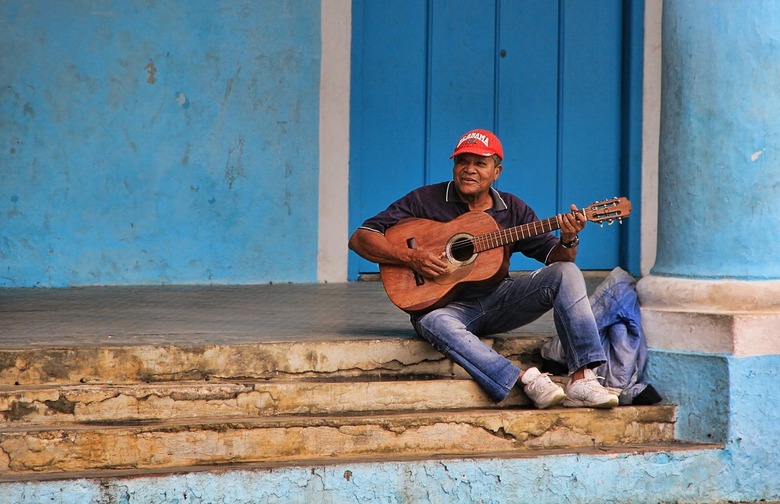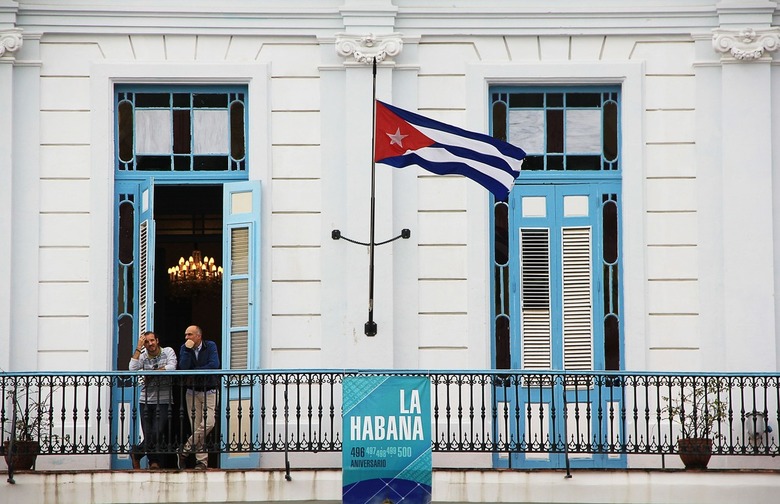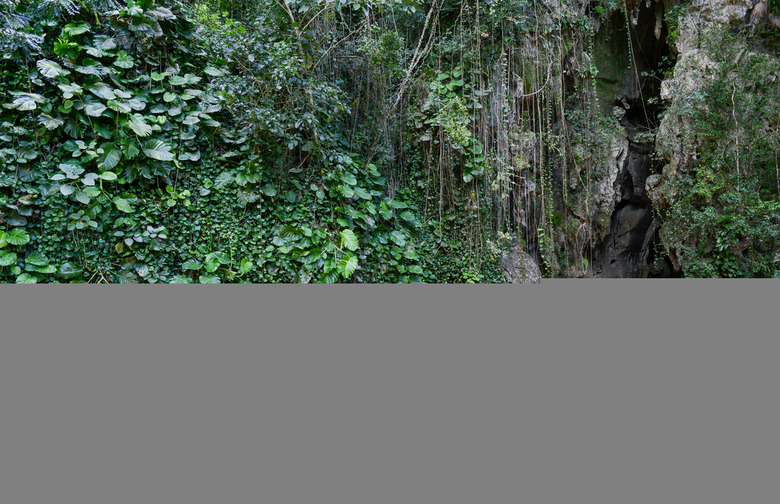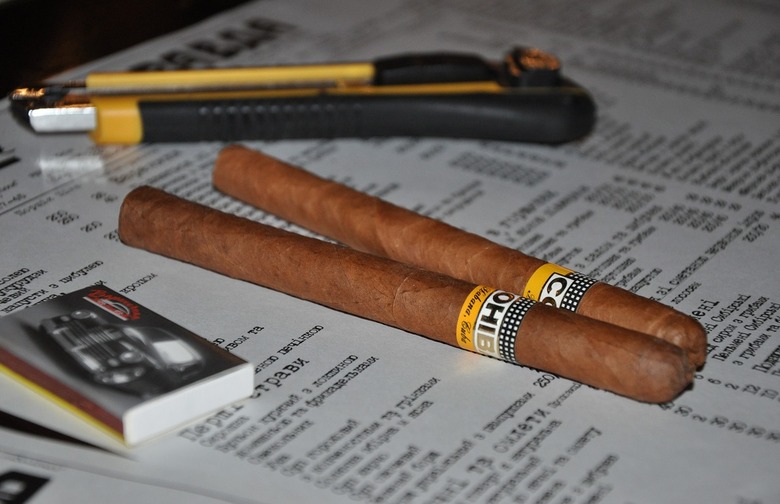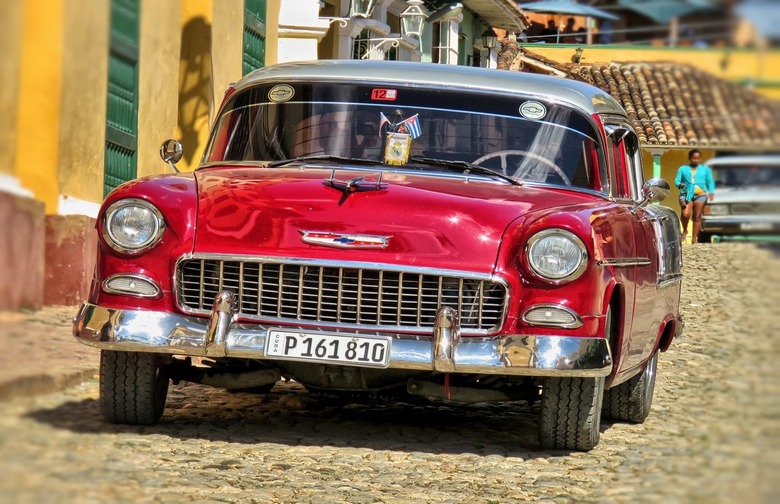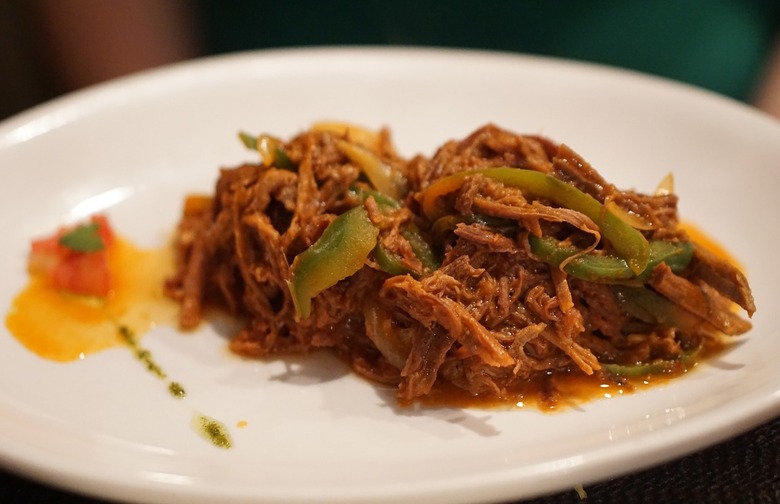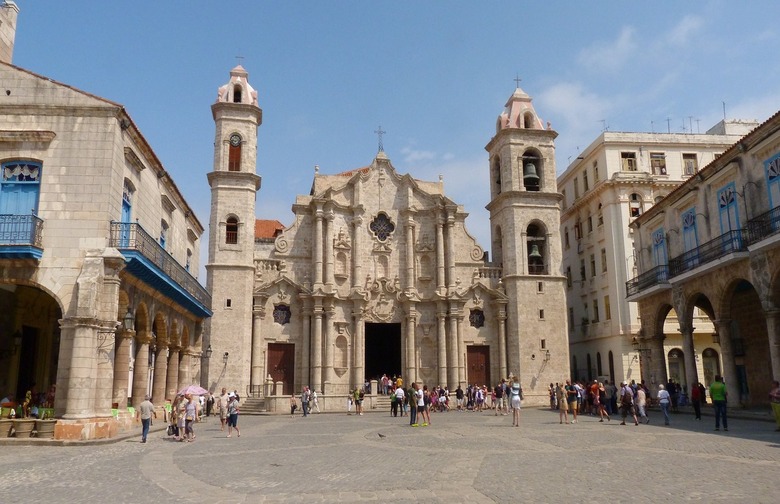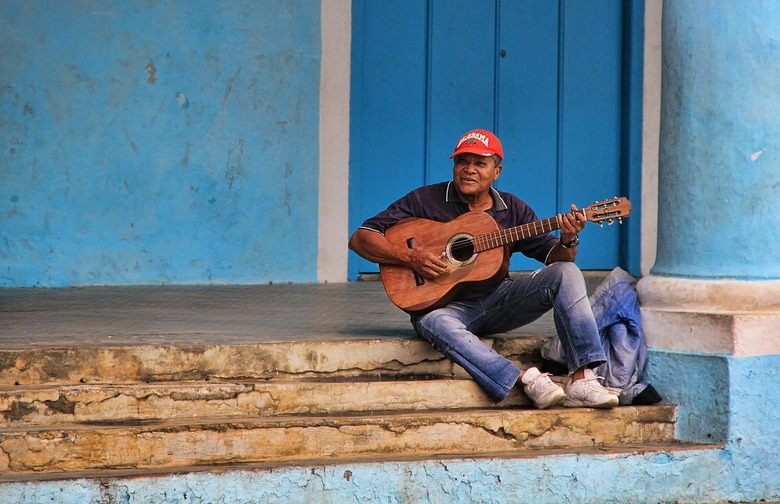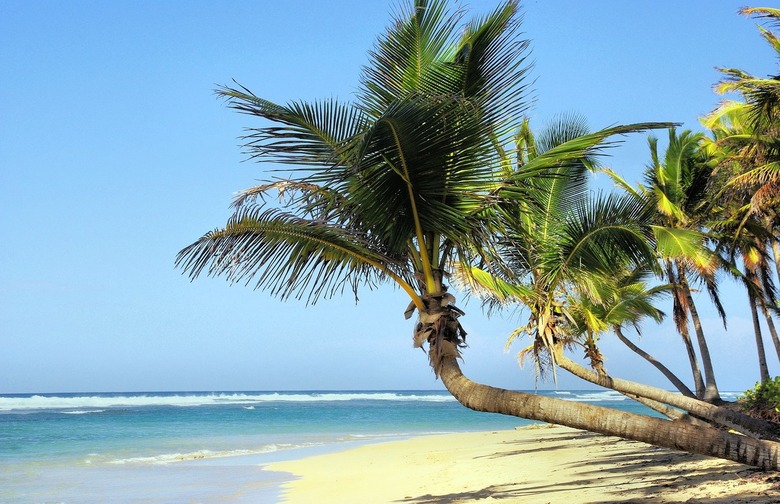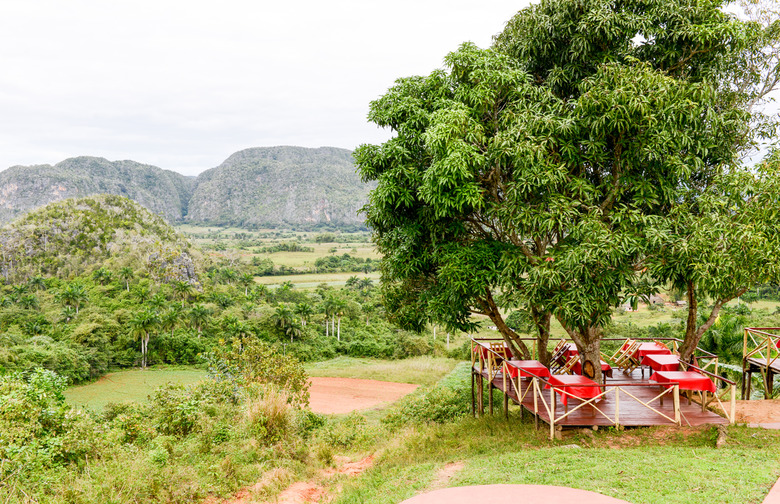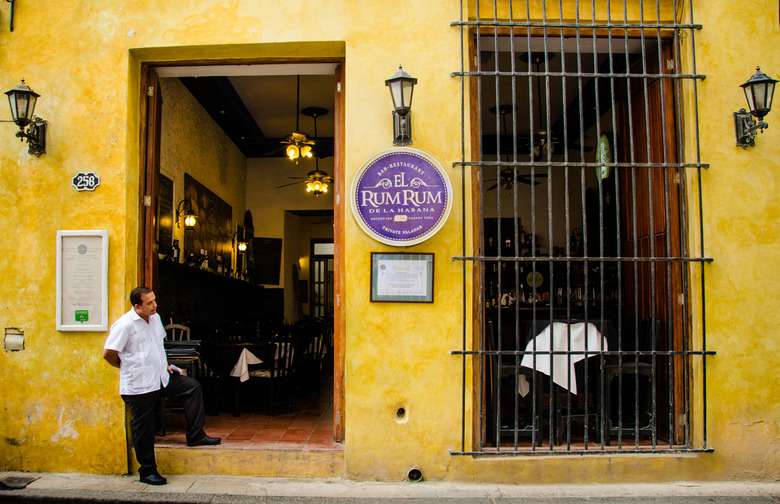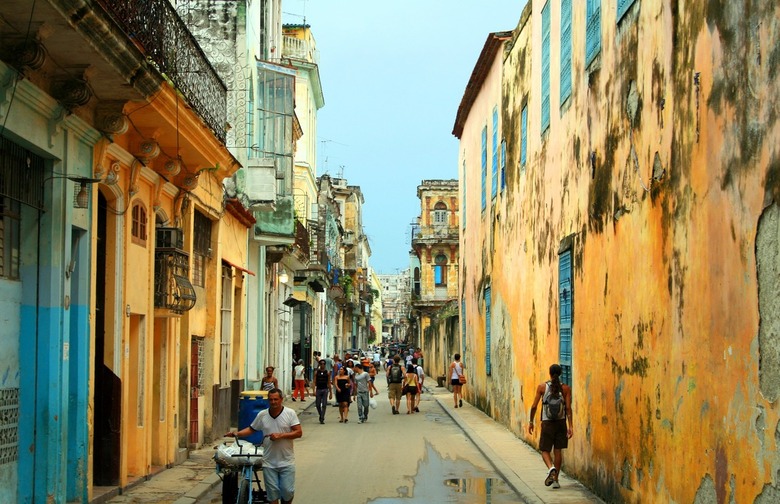12 Reasons You Need To Visit Cuba The Moment You Can (Slideshow)
Because You Can
America is all about freedom, including the freedom to travel to countries deemed to have less freedom than us. (Got that?) In order to fully exercise your rights — assuming you're covered by one of the currently permitted categories of travel or wait until the ban is completely lifted — you almost have to take advantage of this opportunity. Plus, exploring unfamiliar territory is kind of what got people to the New World in the first place. So go as soon as you can; it's your duty as an America.
Caves
Cuba is home to an enormous system of caves called the Caverna de Santo Tomás, which covers more than 28 miles. Ninety-minute guided tours through a half-mile of the cave are available from Viñales in the west, with highlights that include stalagmites and stalactites, bats, underground pools, and a replica of an ancient mural. Some portions of the tour are slippery and/or steep, so plan and dress accordingly.
Cigars
Smoking is bad for your health, but the chance to legally puff on an authentic Cuban cigar is hard to pass up. For the full experience, consider taking a trip to a tobacco planation (like Pinar del Río, a two-hour drive from Havana) for an informative tour and the opportunity to buy a box of quality stogies direct from the source. Smoking isn't good for you, but at least it's good for the economy — something of which cigars have always been an important part.
Did you know Sam Adams made beer-infused cigars a few years back? Click here for details.
Classic Cars
Since Cuba has no auto industry and the embargo has made it difficult to buy many foreign vehicles, a lot of the cars in Cuba are of the old-school variety. Many are even classic American autos from the 1950s, like the Chevy Bel Air, Ford Fairlane, and Plymouth Belvedere. Although current American cars are not much to get excited about (and they don't really exist in Cuba anyway), the keeping of classic cars is both a show of pride and necessity, as the only other obtainable options are Polish Fiats, Argentinian Fords, Soviet brands like Moskovitch and GAZ, and a few Chinese models.
Food
What would a Daily Meal list be without food? And thankfully for us all, there's some good grub to be found in Cuba. The cuisine is a blend of Native American Taíno, Spanish, African, and Caribbean cuisines, with the most common dishes being roasted pork or other meat with mojo (a sauce made of oil, garlic, onion, and spices like oregano and bitter orange or lime juice), ropa vieja (shredded beef simmered in a tomato-based sauce called criollo — click here for recipes), roast beef stuffed with chorizo and hard-boiled eggs, and, of course, rice and beans (recipes here). Although, it's worth noting that hard economic times and government rationing can make fining a good meal a bit tricky. For your best bet, stop into one of the numerous paladares (privately-run restaurants), which have only been allowed to exist since the early 1990s. With the government now easing out of the food industry, the quality and selection will only get better over time.
History
There's a lot more to Cuba's past than rocky relations with the United States. In fact, the country currently has nine sites that are recognized by the United Nations Educational, Scientific and Culture Organization (UNESCO) as being culturally or naturally significant. These locations include Camagüey, which was among the first seven villages founded by the Spanish in Cuba back in 1528; Old Havana and its fortifications, which were built in Baroque and Neoclassical styles in the sixteenth to nineteenth centuries by Spanish colonists; San Pedro de la Roca Castle, built in the seventeenth century to defend the port of Santiago de Cuba; eighteenth-century sugarcane mills, cattle ranches, and tobacco plantations; and nineteenth-century coffee plantations. For more recent history, take a hike up to Comandancia de la Plata in the Sierra Meastra mountain range to check out Fidel Castro's rebel headquarters during the revolution, which includes a museum as well as Castro's living quarters.
Music
It seems like there's music on every corner in Cuba, and this actually might be true! Being a street musician is a state-licensed job in the country, and artists can openly accept money from locals, tourists, and any passersby. And it's not just limited to one type of music either. As Bill Banfield, professor at Berklee College of Music in Boston, found out on a recent trip, Cuba has jazz clubs, hard rock shows, hip hop acts, and he even stumbled upon a rehearsal of famous Cuban conductor Zenaida Romeu that was totally open to the public.
Ocean and Beaches
Being an island, Cuba has an awful lot of coastline – about 3,570 miles, to be precise. Thus, there are more than 300 beautiful beaches around the country, including notable spots at the unspoiled Cayos Coco and Guillermo, Playa Ancón (often called the finest arc of sand on Cuba's south coast), and the famous Varadero Beach on the Hicacos Peninsula, which is home to numerous all-inclusive resorts. The latter is also close to natural attractions like a chain of offshore cays and breathtaking coral reefs. The warm, clear waters are perfect for snorkelers and scuba divers, who might be lucky enough to spot a shipwreck among the abundant sea life.
Parks
The beaches aren't the only part of Cuba's landscape worth exploring. The country also has numerous national parks, each one offering something a bit different.
Sierra Cristal is known for its mountains and being the first national park in Cuba (est. 1930), Caguanes' ecosystem is home to more than 200 different species of animals (24 of them unique to the area), and Desembarco del Granma National Park (named for the yacht that Fidel Castro, Raúl Castro, Che Guevara, and 79 supporters sailed from Mexico to Cuba in 1956 to begin the Cuban Revolution) is notable for its marine terraces, pristine sea cliffs, and waterfalls. Elsewhere, the Jardines de la Reina ("The Queen's Garden") archipelago in the south was named by Christopher Columbus and has some of the healthiest coral in the Caribbean, as it has remained practically untouched for 60 years.
Rum
Not into cigars? If your preference is spirits, you'll be happy to know that some of the best rum in the world is made in Cuba. After all, the country is rich with sugarcane, so it only makes sense that it would produce molasses and, in turn, rum. In fact, the Bacardi Rum Company was originally established in Cuba in 1862, but was forced to close up shop and move to Bermuda after the Castro government seized all its property and forced the founding family into exile ("But why is the rum gone?"). Consider a visit to the original Bacardi distillery, the still-operating Havana Club, as well as the Havana Club Rum Museum. It's also worth noting that the daiquiri, mojito, and Cuba Libre (aka rum and Coke) were all invented in Cuba.
The influx of American has led to a shortage of beer in Cuba. Click here for the story.
The Great Cuban Pastime
Although baseball is widespread and popular in America, attending a game in Cuba is still a must. The enthusiasm expressed by fans of the game is unrivaled in this world (with the exception of Japan, possibly), with ample amounts of live music, chanting, and cheering. Additionally, a visit to Estadio Latinoamericano is, like a lot of the country, akin to traveling back in time.
It was built in 1946, can hold 55,000 fans, and is the largest baseball stadium in Cuba — and second-largest in the world behind Dodger Stadium. The Cuban Baseball Hall of Fame is located under the grandstand of Estadio Latinoamericano, so true baseball fans and historians alike will be delighted by the visit.
You Gotta Beat the Rush
After reading about all the wonderful reasons you need to visit Cuba, you're hopefully now convinced a trip is necessary. However, lots of other people will soon be coming to the same conclusion — which means the best reason to visit Cuba the moment you can is because soon everyone will be doing it, too. So be a trendsetter, beat the crowds, and book your trip as soon as possible!
